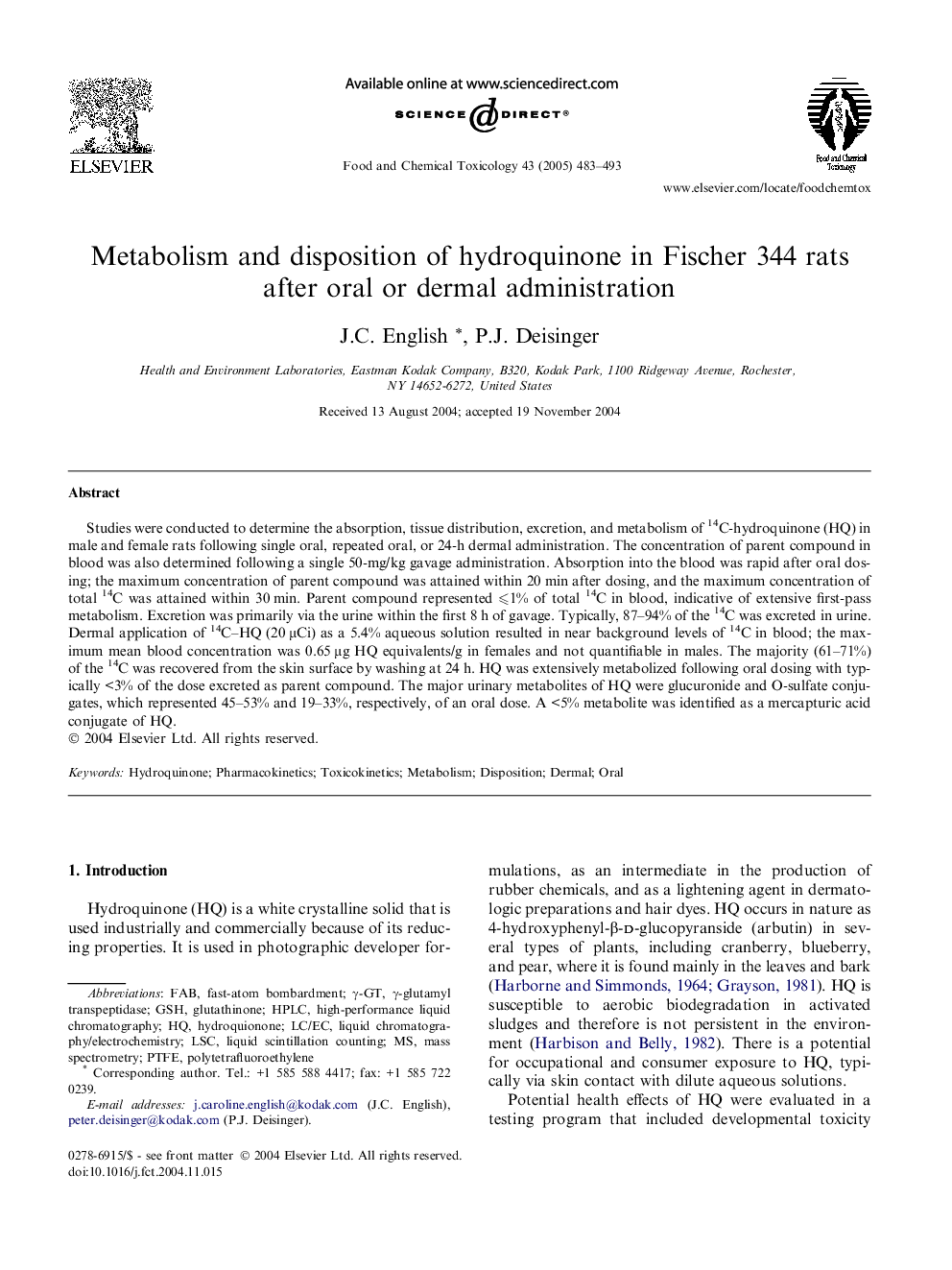| کد مقاله | کد نشریه | سال انتشار | مقاله انگلیسی | نسخه تمام متن |
|---|---|---|---|---|
| 9031128 | 1130968 | 2005 | 11 صفحه PDF | دانلود رایگان |
عنوان انگلیسی مقاله ISI
Metabolism and disposition of hydroquinone in Fischer 344 rats after oral or dermal administration
دانلود مقاله + سفارش ترجمه
دانلود مقاله ISI انگلیسی
رایگان برای ایرانیان
کلمات کلیدی
FAB, fast-atom bombardmentLSC, liquid scintillation countingγ-GT, γ-glutamyl transpeptidaseToxicokinetics - تاکسیکوسینتیک، تاکسیکوکینتیکOral - دهانیMS, mass spectrometry - طیفسنجی جرمیPharmacokinetics - فارماکوکینتیکMetabolism - متابولیسم Hydroquinone - هیدروکینونDisposition - وضعPTFE, polytetrafluoroethylene - پلی تترافلوئورواتیلن، تفلونDermal - پوستHPLC, high-performance liquid chromatography - کروماتوگرافی مایعی کارا
موضوعات مرتبط
علوم زیستی و بیوفناوری
علوم کشاورزی و بیولوژیک
دانش تغذیه
پیش نمایش صفحه اول مقاله

چکیده انگلیسی
Studies were conducted to determine the absorption, tissue distribution, excretion, and metabolism of 14C-hydroquinone (HQ) in male and female rats following single oral, repeated oral, or 24-h dermal administration. The concentration of parent compound in blood was also determined following a single 50-mg/kg gavage administration. Absorption into the blood was rapid after oral dosing; the maximum concentration of parent compound was attained within 20 min after dosing, and the maximum concentration of total 14C was attained within 30 min. Parent compound represented ⩽1% of total 14C in blood, indicative of extensive first-pass metabolism. Excretion was primarily via the urine within the first 8 h of gavage. Typically, 87-94% of the 14C was excreted in urine. Dermal application of 14C-HQ (20 μCi) as a 5.4% aqueous solution resulted in near background levels of 14C in blood; the maximum mean blood concentration was 0.65 μg HQ equivalents/g in females and not quantifiable in males. The majority (61-71%) of the 14C was recovered from the skin surface by washing at 24 h. HQ was extensively metabolized following oral dosing with typically <3% of the dose excreted as parent compound. The major urinary metabolites of HQ were glucuronide and O-sulfate conjugates, which represented 45-53% and 19-33%, respectively, of an oral dose. A <5% metabolite was identified as a mercapturic acid conjugate of HQ.
ناشر
Database: Elsevier - ScienceDirect (ساینس دایرکت)
Journal: Food and Chemical Toxicology - Volume 43, Issue 3, March 2005, Pages 483-493
Journal: Food and Chemical Toxicology - Volume 43, Issue 3, March 2005, Pages 483-493
نویسندگان
J.C. English, P.J. Deisinger,